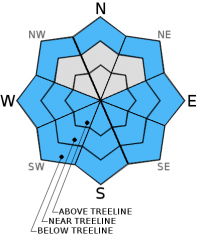| Thursday | Thursday Night | Friday | |
|---|---|---|---|
| Weather: | Sunny | Clear | Sunny |
| Temperatures: | 44 to 49 deg. F. | 25 to 30 deg. F. | 48 to 53 deg. F. |
| Mid Slope Winds: | Northeast | East | East |
| Wind Speed: | 10 to 15 mph with gusts to 30 mph in the morning | 10 to 20 mph | 10 to 15 mph becoming light in the afternoon |
| Expected snowfall: | 0 | 0 | 0 |
| Thursday | Thursday Night | Friday | |
|---|---|---|---|
| Weather: | Sunny | Clear | Sunny |
| Temperatures: | 37 to 44 deg. F. | 25 to 30 deg. F. | 42 to 48 deg. F. |
| Ridge Top Winds: | Northeast | North shifting to northeast after midnight | Northeast |
| Wind Speed: | 20 to 30 mph with gusts to 50 mph | 25 to 30 mph with gusts to 40 mph decreasing to 15 to 20 mph after midnight | 15 to 20 mph decreasing to 10 mph in the afternoon |
| Expected snowfall: | 0 | 0 | 0 |























